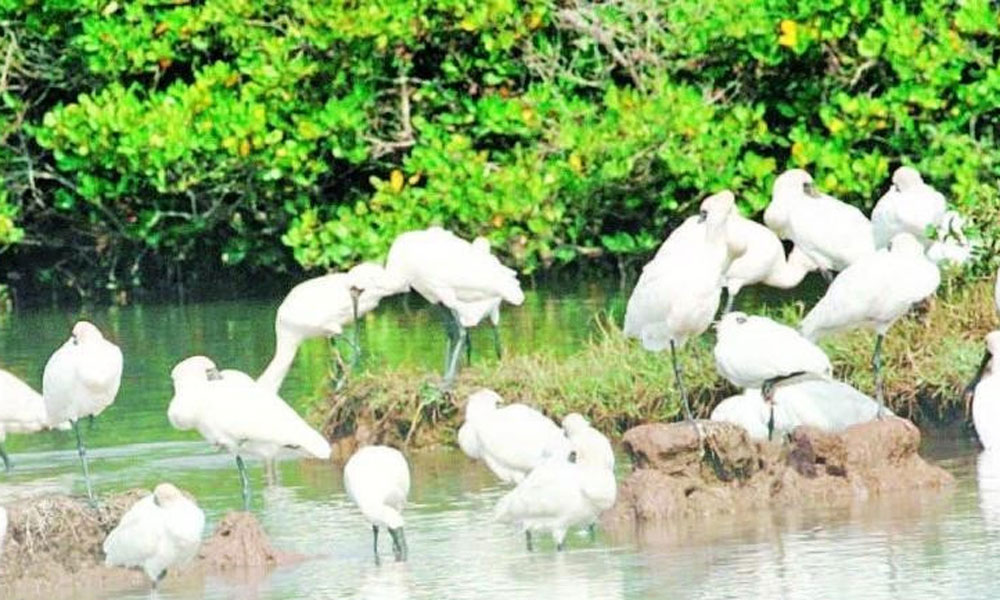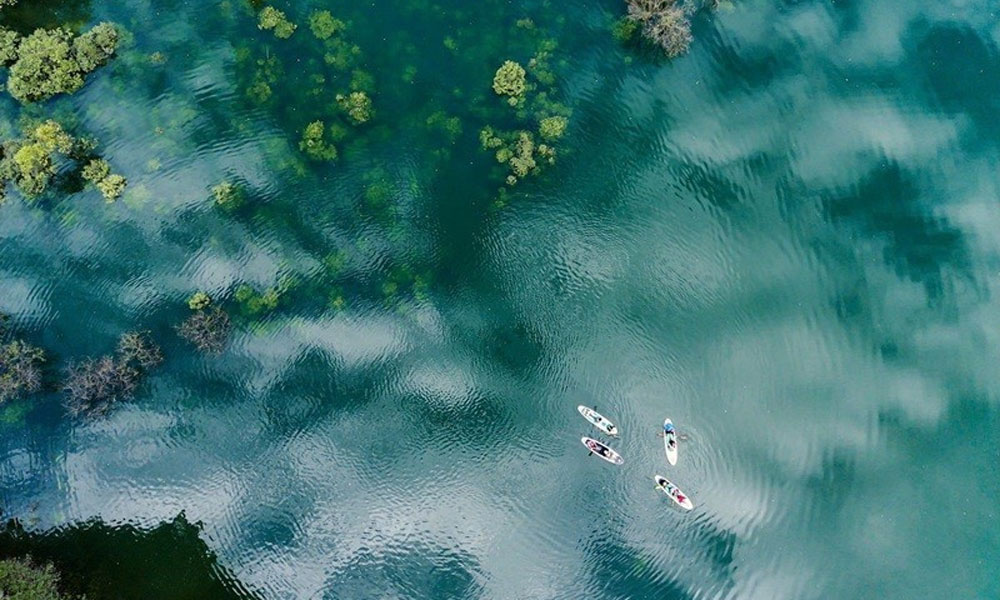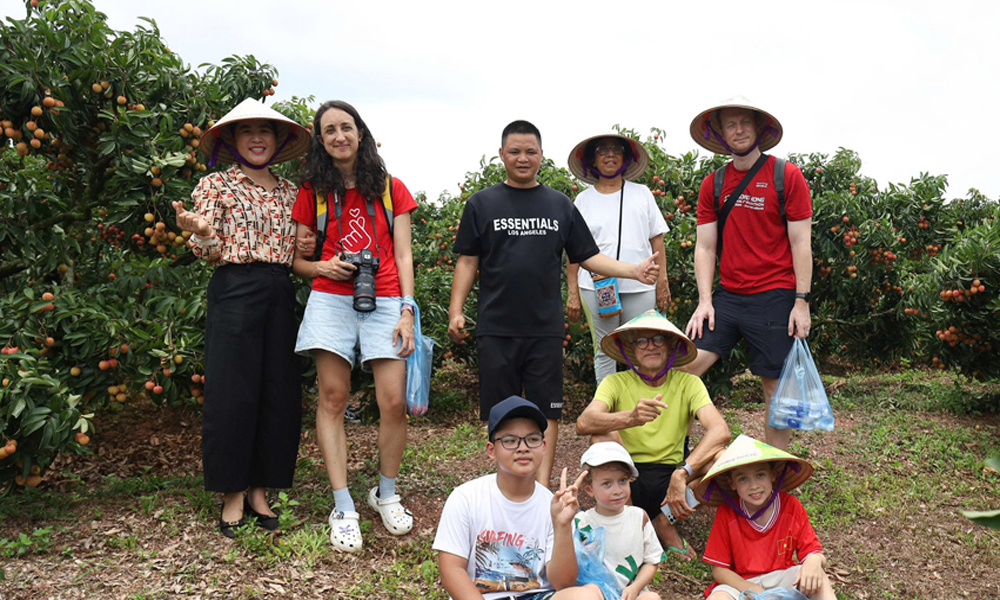Xuan Thuy aims to become a multifunctional ASEAN heritage park
Xuan Thuy National Park in Ninh Binh Province, a biodiversity conservation area home to many rare migratory bird species, has been recognised as Viet Nam’s first Ramsar site and is part of the World Biosphere Reserve. It is currently being nominated as an ASEAN Heritage Park.
Visiting Xuan Thuy National Park, standing on the observation tower, we were surrounded by the colourful hues of the sky, water, and plants, making the summer heat seem almost irrelevant.
 |
|
Many rare bird species have chosen Xuan Thuy National Park as a stopover on their migratory journey. |
Spreading his arms wide, Doan Cao Cuong, Director of Xuan Thuy National Park, introduced the wetland, which is located at the mouth of the Red River flowing into the Gulf of Tonkin, representing the coastal estuarine wetland ecosystem typical of northern Viet Nam.
This open ecosystem is rich in biodiversity, with numerous rare plant and animal species.
The park covers a total area of 15,100 hectares, consisting of two zones: a core zone of 7,100 hectares and a buffer zone of about 8,000 hectares. It was recognised as a national park by the prime minister in 2003.
Previously, in 1989, the wetland area within the park was designated as Viet Nam’s and Southeast Asia’s first Ramsar site, marking Viet Nam’s accession as the 50th member of the Ramsar Convention (the Convention on Wetlands of International Importance, especially as Waterfowl Habitat).
The main types of wetlands in Xuan Thuy National Park include tidal flats with mangrove forests; tidal flats without mangroves; shrimp ponds; sandy strips on the outer edge of Con Lu and sandbars at river mouths – Con Xanh and Con Mo; distributary rivers and tidal creeks; and estuarine waters.
The park is home to over 200 species of vascular plants belonging to 145 genera and 65 families, including 14 main mangrove species. Among them, Sonneratia, Lumnitzera, Aegiceras, Rhizophora, Acanthus, and Derris dominate in terms of both numbers and coverage.
The park also hosts 110 species of zooplankton, 385 species of invertebrates, 155 species of fish, and 427 species of insects. It contains many economically valuable aquatic species.
Notably, it serves as a crucial stopover and wintering ground for migratory waterbirds, earning it the nickname “International Bird Station” or “Paradise” for birds.
Surveys and research conducted at Xuan Thuy National Park have recorded 222 bird species from 42 families and 12 orders, including 166 migratory species, many of which are rare waterbird species listed in the International Red Book.
Many species have chosen the park as a vital stopover along their annual long-distance migration routes. Notably, Xuan Thuy National Park hosts the largest population of black-faced spoonbills in Viet Nam.
According to Doan Cao Cuong, the park is also a place where people and nature coexist closely. Within the vast mangrove forests, tidal flats, and abundant aquatic resources such as shrimp, crabs, fish, and clams, many families earn their livelihoods.
To minimise negative impacts from communities dependent on the park’s resources, numerous projects supported by domestic and international organisations have been implemented over the years, helping the local people to increase their income through alternative livelihoods, such as beekeeping, mushroom cultivation, and community-based ecotourism.
While benefiting from the park, local communities, authorities, and law enforcement have collaborated in many conservation activities to protect and develop the park’s ecosystem.
Forest rangers regularly patrol to protect the forest and prevent illegal activities such as trapping wild birds, collecting firewood, and improper exploitation of aquatic resources.
The park’s management staff also carry out awareness-raising campaigns in buffer zone communes to educate people on the conservation of natural resources and migratory bird species and annually organise forest planting activities.
The efforts of the sector and community all aim toward the goal of “elevating” Xuan Thuy National Park through active efforts to develop and finalise the nomination dossier for ASEAN Heritage Park status.
Recently, a survey, assessment, and evaluation was conducted by a working delegation from the ASEAN Centre for Biodiversity (ACB), including experts from ACB, the ASEAN Secretariat, managers of national parks across the region, the Department of Nature Conservation and Biodiversity (Ministry of Agriculture and Environment), and representatives of the Institute of Biology under the Viet Nam Academy of Science and Technology.
They concluded that Xuan Thuy National Park fully meets all 12 criteria to be recognised as an ASEAN Heritage Park.
The nomination dossier was praised for its thoroughness and scientific foundation, accurately reflecting the park’s current state and ecological potential.
The integration of conservation efforts with community livelihoods and cultural-historical values makes Xuan Thuy National Park uniquely valuable among other conservation areas in the region.
Doan Cao Cuong affirmed that the proposal to recognise the park as an ASEAN Heritage Park carries significant meaning, aiming at multiple practical benefits, such as preserving an intact representative sample of the estuarine wetland ecosystem typical of Viet Nam’s northern coast and especially protecting endangered and rare species of wild flora and fauna.
It also creates a major opportunity for Xuan Thuy National Park to exchange information, share management and conservation experiences, and promote its values among ASEAN and global Heritage Parks, while also establishing a “brand” to attract tourism service investors and visitors to Xuan Thuy National Park.
 Bắc Ninh
Bắc Ninh










Reader's comments (0)